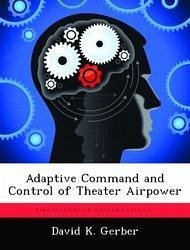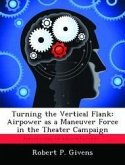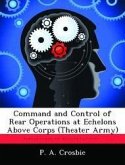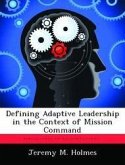The Air Force doctrinally advocates centralized command and control (C2) with decentralized execution as the best means to concentrate force on any facet of an enemy's power. Although there are historical examples of effective command and control that have been less centralized, the USAF views decentralization as the cause of inefficient and suboptimal use of airpower. Trends in modern business, government, economics, science, and computer and communications systems suggest that it is appropriate to develop predominantly decentralized C2 methods to enhance the current doctrine. Two broad-based tools assist the development of the expanded spectrum of C2 options. First, this study develops a conceptual framework and describes eight interconnected subject areas to consider in describing a C2 system. Second, the author also describes the new science of complexity theory that provides interdisciplinary viewpoints to assess and enhance the adaptability and responsiveness of command and control. Juxtaposing the conceptual framework and complexity theory shows numerous intuitive connections between the two tools. By using the conceptual framework, this study describes the current archetype of centralized command and control through an organization built around a theater air operations center. Then, using complexity theory and other related sources, the study constructs a pre-dominantly decentralized C2 system characterized by a networked hierarchical organization. Other aspects of the decentralized system include the use of mission orders and requests, unified lines of combat command below the theater air component commander, different approaches to training, doctrine, and education, and decentralized planning, execution, and combat assessment networks. Using complexity theory, this study combines the adaptability and responsiveness of complex systems with the directed purpose of a theater campaign.
Hinweis: Dieser Artikel kann nur an eine deutsche Lieferadresse ausgeliefert werden.
Hinweis: Dieser Artikel kann nur an eine deutsche Lieferadresse ausgeliefert werden.








